A seasonal produce guide for the month of August, with tips on how to choose, store and prepare each ingredient! Plus, multiple recipes included for all 8 produce items!
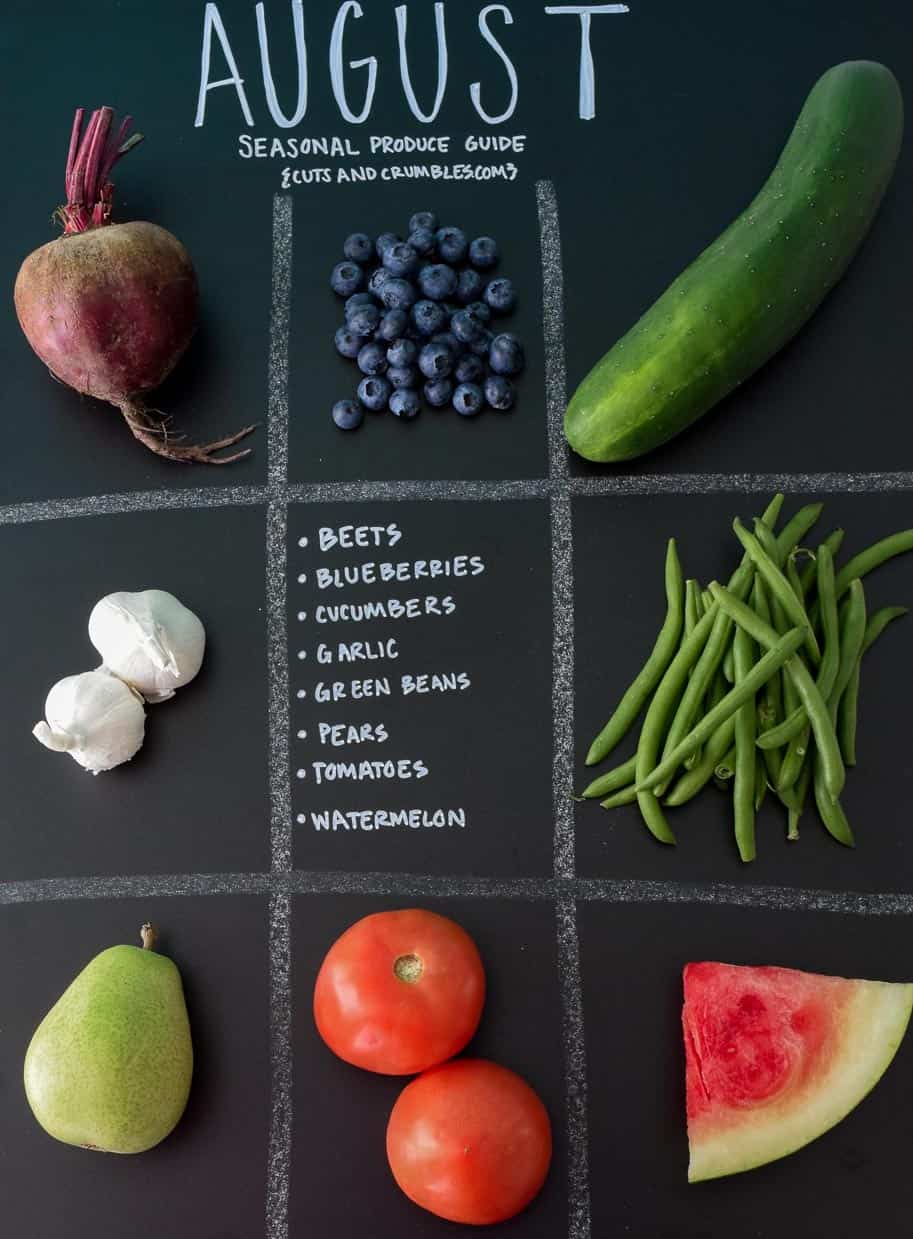
I cannot believe it is already August! It feels like I just posted the January Seasonal Produce Guide last week and now we are already starting to watch football again?! I won't complain because I LOVE football season, but where did summer go??
These monthly seasonal produce guides are designed to help you determine exactly what foods are currently in season, how to choose them and store them, as well as give you some great recipe ideas from fellow food bloggers that incorporate these seasonal finds!
Eating seasonally will help you save money while increasing the amount of flavor and nutrients you are obtaining from your food. So let's dig into our August Seasonal Produce Guide!
Beets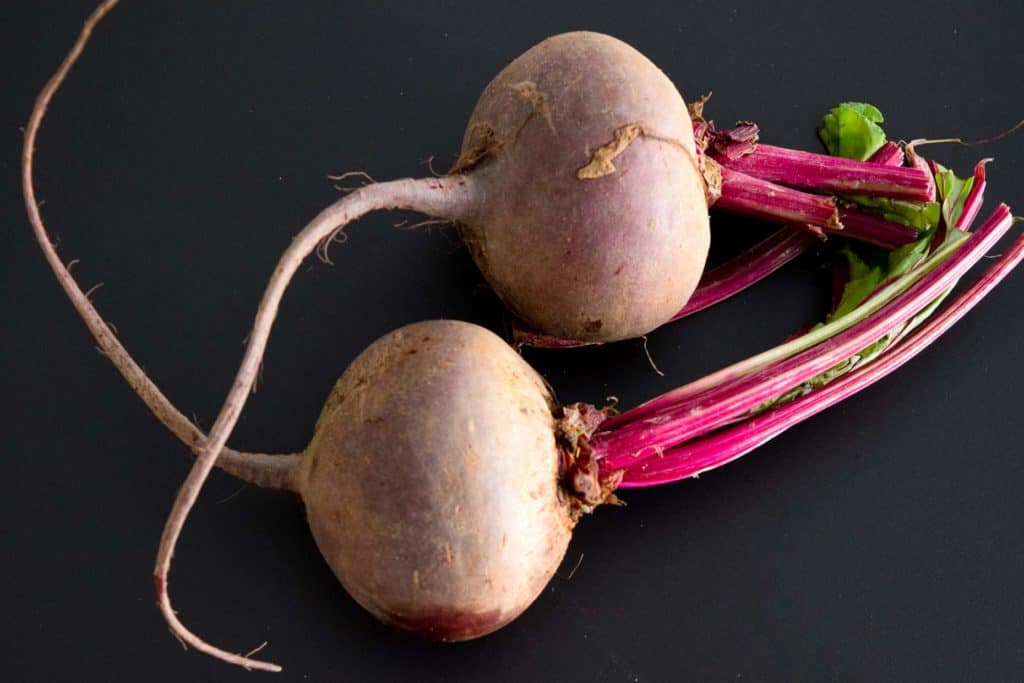
We have eaten a LOT of beets this summer. Beet salads, roasted beets, beets on our steaks and chicken, we don't discriminate where we drop the beet. (You see what I did there? 😛 ) They add a nice crunch and brand new flavor to our plate rather than the standard carrots or green beans, and I'm here for all of it!
- How to choose them:
- Choose beets that are round, smooth, hard and free of bruising, cuts, soft or moist spots, or flabby skin. The taproot should be slender.
- The leaves should be small, crisp and dark green. They wilt quickly so they're a good indicator of the freshness of the beets. If they are wilted, yellowed or rotten, you shouldn't purchase it. If the leaves have been removed, make sure at least 1 inch of stem remains.
- A beet should have an intact root, otherwise, it may spoil more quickly.
- They should be firm to the touch but not rock hard, otherwise, they will be hard to cook. Soft spots indicate that it may be rotten inside.
- The smaller the beet is, the more tender it will be.
- How to store them:
- Cut off the greens before storing to reduce moisture loss, but leave on at least an inch of stem (however, baby beets should be stored with the greens on).
- Beets can be stored in the refrigerator in a sealed bag for 10 days to 3 weeks and should not be washed prior to storing. You can also store them in a cool, dark place, such as a basement shelf. Check them regularly for odor or any green or black spots, and dispose of if you notice any.
- If you're going to eat the leaves, store them in a bag in your crisper drawer and eat them within 1-2 days (can be eaten raw or cooked).
- How to prepare them:
Blueberries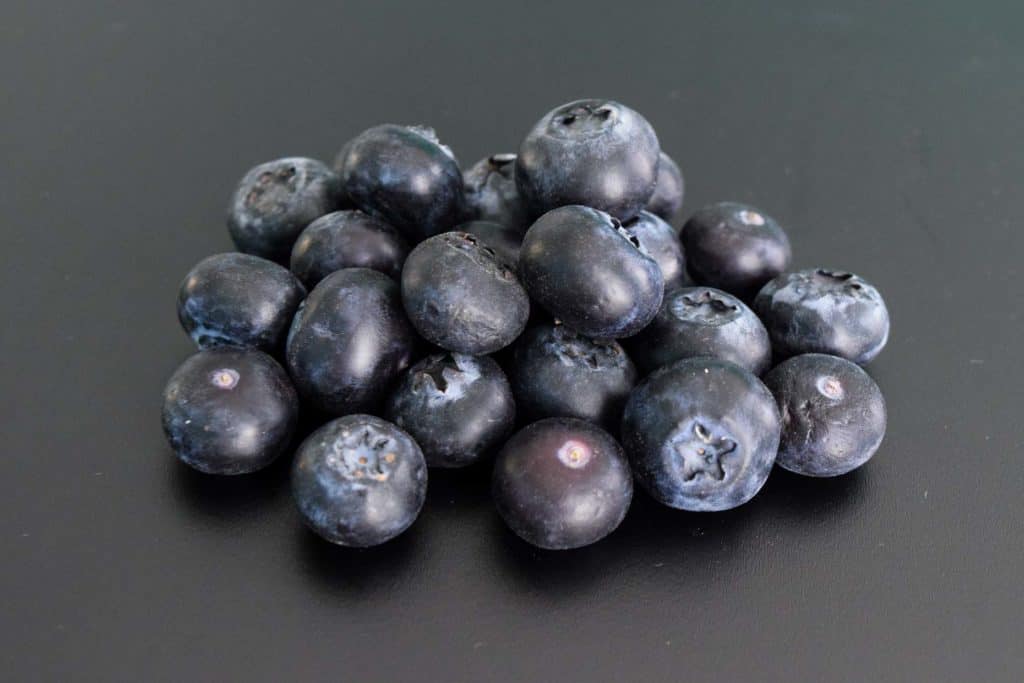
Good ol' blueberries! Tis the season to go blueberry picking (or purchasing if you're lazy/short on time), and whip up some muffins, bread or cocktails! 🙂 The other day I was so desperate for blueberry muffins but only had enough berries to make 6 muffins and I still did it because I'm obsessed. #worthit
- How to choose them:
- Choose blueberries that are firm, dry, and plump.
- Choose blueberries with smooth skin that is deep purple in color and almost silvery in appearance.
- Avoid blueberries that look soft or shriveled or any containers that show signs of juice stains, which may be a sign of bruising.
- How to store them:
- Refrigerate in the original container or in a paper towel-lined bowl for up to 10 days.
- Do not store in the crisper drawer, as you want air circulation to prevent molding.
- Do not wash before storing. Excess moisture will promote molding.
- How to prepare them:
Cucumber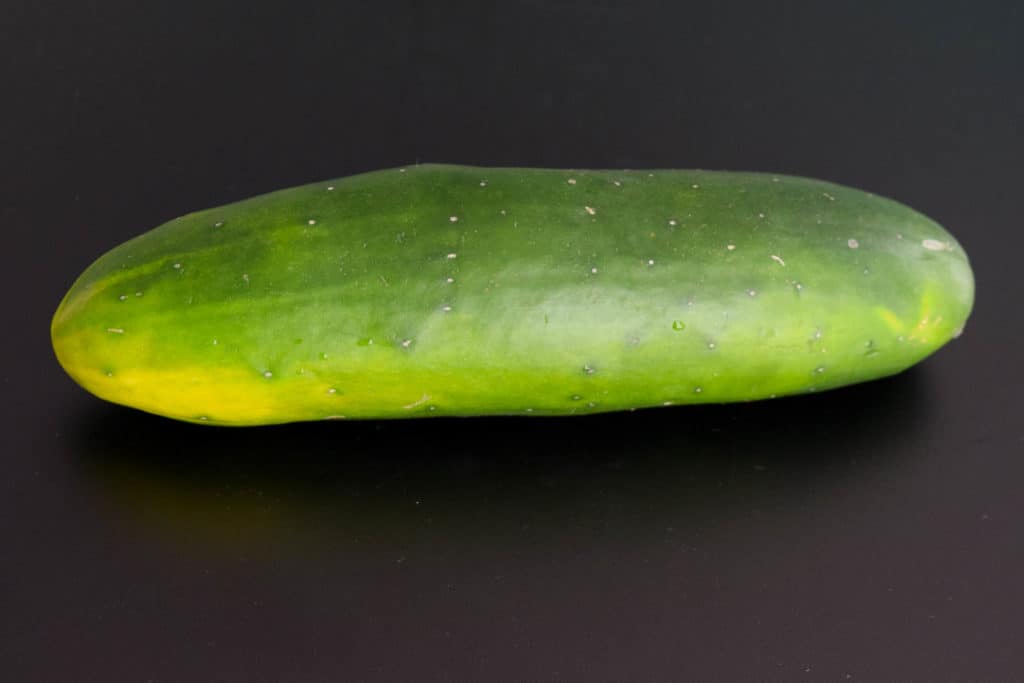
Another summer staple in our house is the cucumber. Whether we are snacking on it raw, tossing it into salads/pasta salads, or adding it into a mojito, cucumbers are always a great ingredient to have on hand!
- How to choose them:
- Choose cucumbers that are an even, dark green in color.
- Choose cucumbers that are firm and do not bend.
- Choose smaller cucumbers, as they will taste crisper and have smaller seeds.
- Avoid cucumbers that are wrinkled, blemished or have soft spots.
- How to store them:
- Do not store near bananas, tomatoes, or melons, as these will cause the cucumbers to yellow and ripen more quickly.
- Wrap loosely in plastic wrap and store in your refrigerator crisper drawer for 2-3 days.
- How to prepare them:
Garlic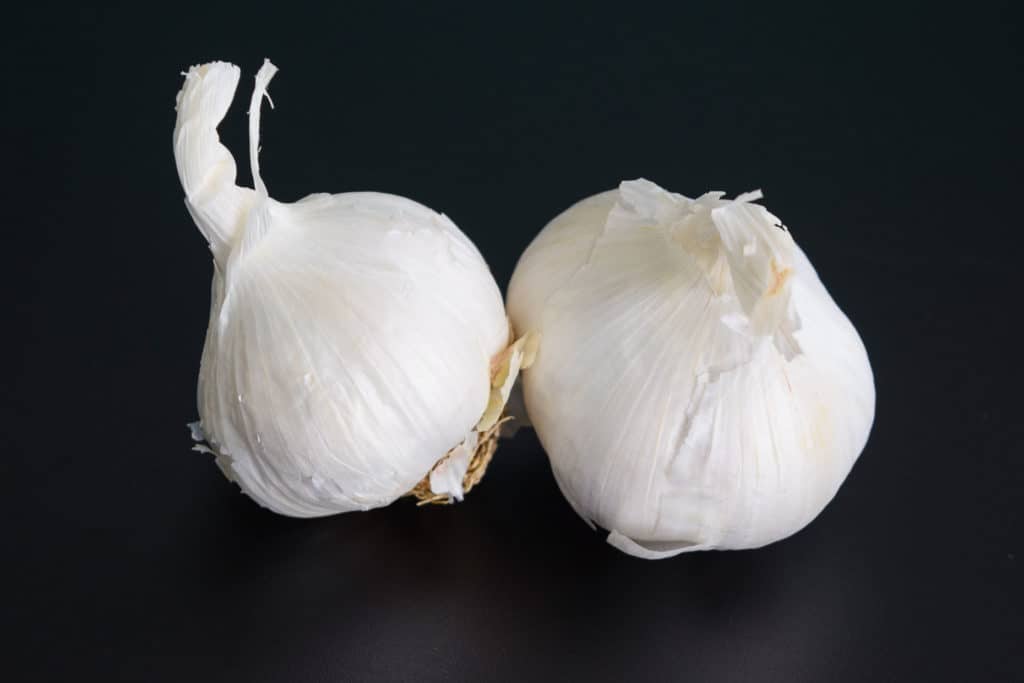
Raise your hand if you are as addicted to garlic as I am! We even received a garlic holder as a wedding present because we use such an excessive amount that it needed its own labeled home. We actually might need a second one because we have SO much...
- How to choose it:
- Choose loose garlic so you can individually choose each bulb. Choose bulbs that are heavy, plump and compact.
- The skin should be taut, dry and unbroken.
- Avoid garlic with damp or soft spots. Also avoid any with sprouting as this is a sign of older garlic.
- How to store it:
- Store in a cool, dry place where air can circulate around the garlic.
- As I stated above, if you use a lot of garlic, invest in a garlic holder that has holes in the side to allow for air to circulate around the garlic. Store on your countertop.
- Do not refrigerate garlic as this will dehydrate the cloves and rob them of flavor.
- How to prepare it:
Green Beans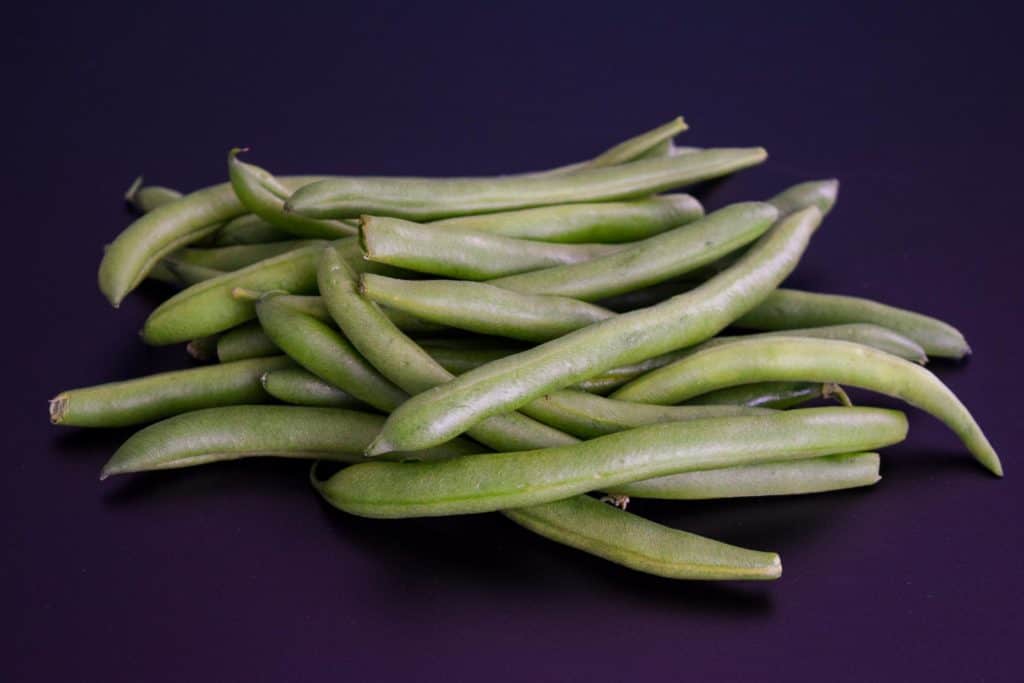
While growing up we ate canned green beans so I always thought I hated them. Once I grew up and discovered fresh green beans and realized they don't have to be soggy and sad my entire opinion of them changed and now I can't get enough!
- How to choose them:
- Choose green beans that are firm, crisp and bright green in color. They should snap easily when broken in half.
- The skin should be smooth and tight. Avoid any with bumps, brown spots or discoloration.
- Try to choose green beans that are similar in size for uniform cooking.
- How to store them:
- Store in the refrigerator in a plastic bag for up to 1 week.
- Do not wash or trim ends until ready to eat.
- How to prepare them:
Pears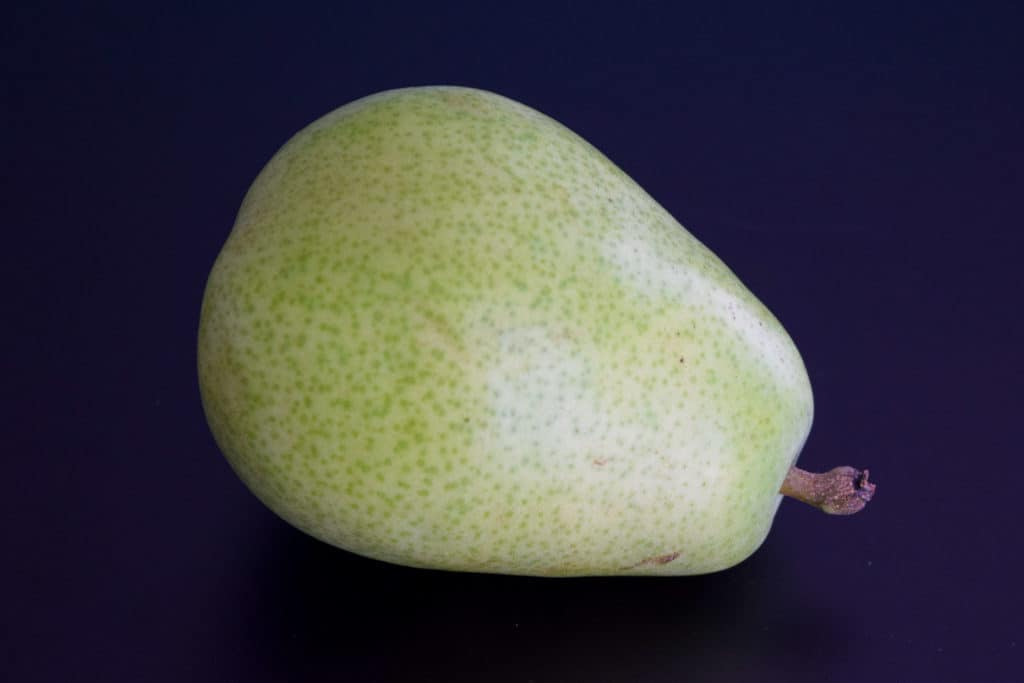
I constantly forget pears exist, yet when I have them I always love them. I'm not sure what's happening there. Maybe trying out some of these delicious recipes below will keep pears on my radar!
- How to choose them:
- Press on the pear by the stem. If you want to eat the pear immediately, it should give a little when pressed. If you want to eat it in a few days, it should be hard. The pear should not be soft anywhere else, as this is a sign that it is overripe.
- Choose pears that are smooth and firm with bright, shiny skin.
- Avoid any pears with bruises or cuts.
- How to store them:
- Store in a paper bag with other fruit (such as an apple or banana) to speed up ripening, if necessary.
- Store at room temperature until ripe and ready to eat.
- Ripe pears can be stored in the refrigerator for 3-5 days.
- How to prepare them:
Tomatoes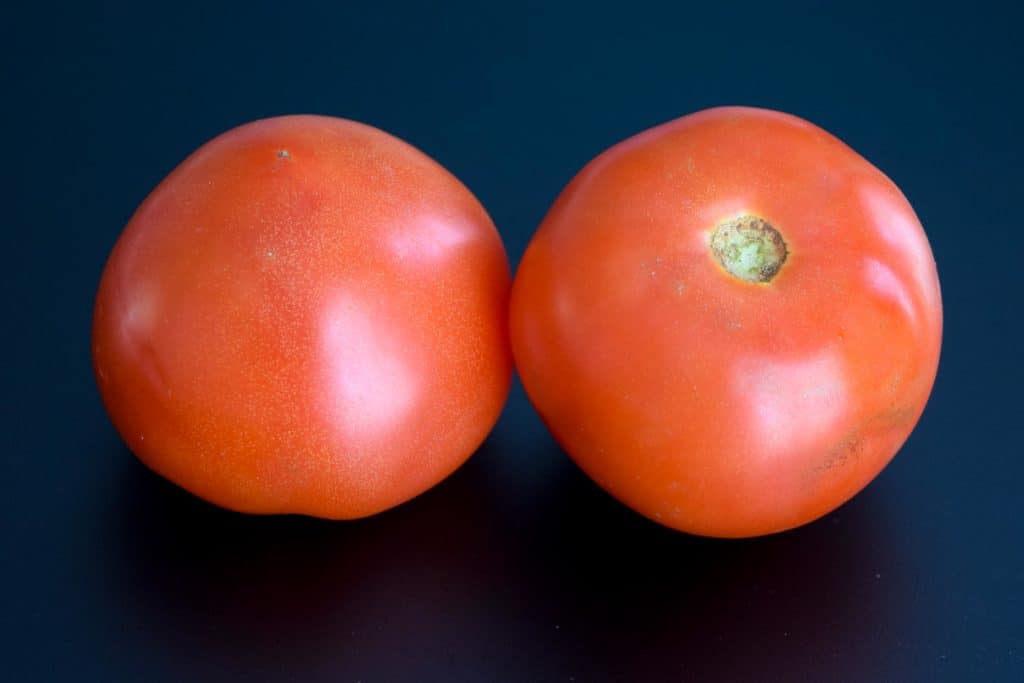
There has never been a time period longer than 2 hours where we haven't had a tomato in our house. (Or as Andrew would say....tah-may-tah.) Ohio mater season is our obvious favorite but we will settle for imported tomatoes when necessary 🙂
- How to choose them:
- Choose tomatoes that are plump and heavy with smooth, shiny skin. The coloration should be uniform.
- Smell the tomato by the stem. Fresh tomatoes will have a strong, sweet, earthy smell.
- Avoid tomatoes with any blemishes, cuts, wrinkles or soft spots.
- How to store them:
- Ripe tomatoes should be kept in a single layer, stem side up, at room temperature, away from sunlight and consumed within a few days.
- Overripe tomatoes should be refrigerated to prevent further ripening and used within 3 days. Before use they should be allowed to reach room temperature to better bring out their flavor.
- How to prepare them:
Watermelon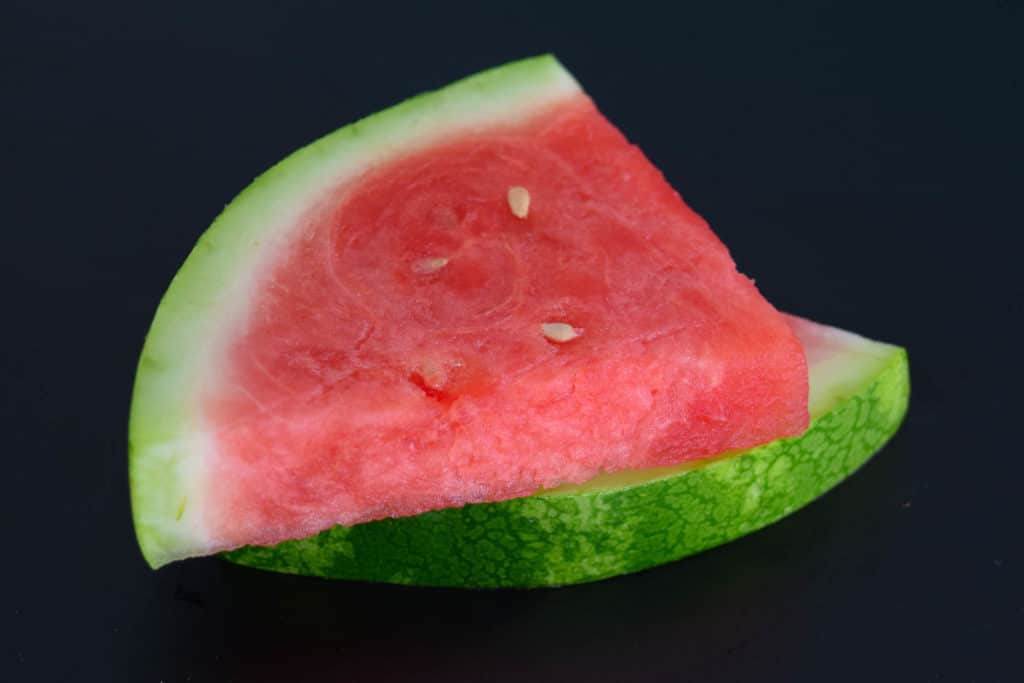
Welcome back to watermelon again! I'll be so sad when watermelon season is over, as this is probably my favorite summer fruit. It's just so refreshing for my summer hangovers! 😛
- How to choose it:
- Choose a watermelon that is heavy for its size and symmetrical.
- Check the yellow spot of the watermelon where it lays on the ground. When it is creamy yellow in color the watermelon is ripe and ready to be eaten.
- Thump the watermelon and listen to the sound. If it sounds hollow it is ripe. If it sounds dull it is either under or overripe.
- Choose a watermelon that is dark green and dull and free from bruises, dents, and cuts.
- If the watermelon is pre-cut, choose slices that are bright red with dark brown or black seeds. Avoid any with white stripes or too many seeds.
- How to store it:
- Store a whole watermelon the refrigerator for up to 1 week. If you need to ripen it first, store at room temperature for a few days.
- Store a watermelon cut in half wrapped in plastic wrap for up to 3-4 days.
- Cut watermelon will keep in the refrigerator in an airtight container for 3-4 days.
- How to prepare it:
That's it!! I hope you enjoyed this month's produce guide! Plan ahead by checking out next month's guide!

Paula says
Hi Caitlin!
What a great guide! Love the first image and all the tips and recipes you recommend. Excellent work! Thanks for sharing 🙂
cutsandcrumbles says
Thanks Paula! 🙂
Cathy Veverka says
Thx for sharing this very informative guide! Saving the link for future reference!! 🙂